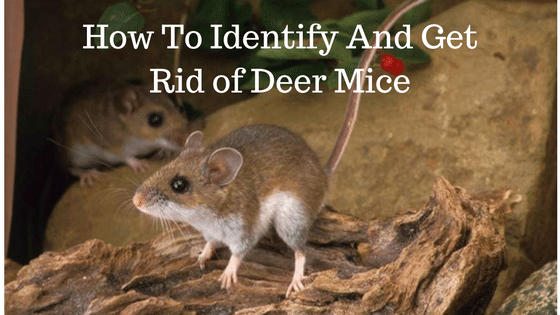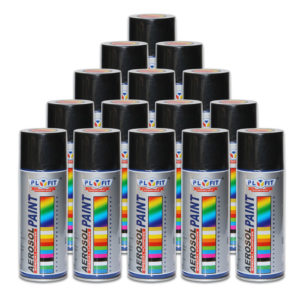How To Identify And Get Rid of Deer Mice

When it comes to ridding your house of pests, you need to know what you’re looking for, the appearance of the pest, what it can do if left unchecked, and how you can get rid of it. In short, you need to know the pest about as well as the exterminator. After all, knowledge is power.
With all of this in mind, in this post, we’re going to take at the characteristics of the deer mouse. We’re going to explore their appearance, their behavior, diet, and habits, their reproduction, signs of an infestation, and ways that you can get rid of the deer mice for good.
Contents
Appearance
Deer mice will range in size from 12 to 28 cm from their nose to their tail. They weigh between 15 and 32 grams. Deer mice are actually named for their fur’s similarity to the color of a deer’s fur. The have grayish-brown bodies that turn white at the tips of their legs and their belly.
They have a particularly telling characteristic which is their bi-colored tail. The tail is dark on top and light at the bottom. Many people will refer to deer mice as field mice.
At birth, deer mice are pink, hairless, and blind. They weigh between 1 and 3 grams and start to change color within 24 hours. On the third day after they’re born, their ears start to unroll. Their eyes open within two weeks and they start to wean around the four week mark.
Their new fur then takes on a blue coloration, but this fades in time and is totally gone by the time they reach the stage of sexual reproduction.
These are round animals, slender in appearance, and they have a long, pointy nose and big, black, beady eyes. Their ears are large and don’t have very much fur covering them. Their tail is short, and it’s covered by many fine hairs.
Behavior, Diet, and Habits
This mouse will tend to nest in logs that are hollow, in tree holes, or under piles of stones or logs. They’re commonly associated with prairies or other similar bushy, rural, wooded areas. They avoid humans if they’re indoors, and they prefer attics and crawl spaces. They also prefer basements.
In the winter months, deer mice will seek out indoor spaces for warmth and comfort. Their nests are made of paper, seed, weeds, and fur. They do become more sluggish during winter months, but they do not enter hibernation. Deer mice will forage for food around their nests, and they will hoard food supplies as well.
Deer mice are not primarily herbivorous, but they will eat just about anything that they find. They prefer nuts, seeds, small berries and fruits, and insects.
Reproduction
Deer mice reach sexual maturity in seven to eight weeks. Once they do, they will produce between two and four litters a year, especially during the warmer months. Typical litters contain between three and five individuals, but they may have as many as eight young born to a litter.
These animals typically live between two and 24 months, but they can live up to eight years long if they’re bred in captivity.
Signs and Further Information
Signs of an infestation include sightings as well as nests or gnawed objects. Deer mice seem to be harmless, but they’re actually carriers of a dangerous disease known as hantavirus.
Hantavirus pulmonary syndrome can develop after inhaling the virus whenever deer mouse feces or urine is disturbed. As a result, when you’re disposing of their droppings, you should be very careful. In fact, the droppings and urine should be sprayed with disinfectant before handling them whatsoever.
How to Get Rid of Deer Mice
If left uncontrolled, deer mice can become very troublesome, even dangerous pests. Since they are the carriers of Hantavirus which causes Hantavirus Pulmonary Syndrome, they’re especially dangerous to humans if left unchecked.
The first and best way to combat deer mice is to use preventative measures to ensure that they have nowhere to nest in the first place. Using rodent-proofing materials on the exterior entrances to your house will ensure that the rodents are not able to enter your house.
Regardless of size, all holes should be sealed up. Believe it or not, deer mice can actually squeeze through holes that are the size of a dime. Keeping weeds and grass mowed along with removing all clutter will make your home far less attractive to any deer mice.
Defensive packaging of your food is also very important. Food containers that are made of stainless steel or glass or even thick and heavy plastic will be better than paper boxes and plastic bags any day.
You should keep in mind that boxes and items stored in crawl spaces, attics, or garages are going to be ideal nesting places for deer mice in general. As such, you should be sure to examine these places very carefully. By keeping these areas tidy, you’ll be making it much easier to spot mouse activity before it gets completely out of control and threatens the health of you and your family.
Getting rid of deer mice from that infected area can be relatively hard to do. Most of the treatment methods out there involve traps. Professional pest control is truly necessary when you’re dealing with a deer mouse infestation.
When it comes to ridding your house of pests, you need to know what you’re looking for, the appearance of the pest, what it can do if left unchecked, and how you can get rid of it. In short, you need to know the pest about as well as the exterminator. After all, knowledge is power.
When you do seek out a pest control service, you’ll want to know you’re working with a team of professionals who know just how to rid you of a nasty infestation. This will have to be a place with a vested interest in your safety. It will have to be us.
Non Toxic Spray

This non-toxic spray kills larvae, eggs, and adult insects by breaking down their exoskeleton. It is safe to spray around the home and works only on the insects. Feel good about spraying indoors around pets, plants and children.
All Natural Non Toxic Insect Killer Spray by Killer Green
